| |
 
THE CURSE OF
FIRE AND WATER
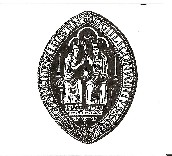 |
|
What would the
traveller have seen as he rode around the
countryside five hundred years ago on
horseback or in his lumbering ox-cart?
He would find bustling towns and sleepy
villages, much as he would today,
together with isolated farm houses and
cottages, but at regular intervals he
would have come across a monastery.
Perhaps not a vast, affluent centre of
learning like those in Winchester, but
still significant communities, offering
spiritual and physical refreshment to the
traveller as well as the inmates.
Discounting the splendours of Boxgrove,
there were four within a day’s ride
from Petersfield: Selborne Priory and
Durford Abbey, the nunnery at Easebourne,
near Midhurst, and Shulbrede Priory, at
Linchmere, all with their own stories to
tell. |
The largest monasteries
were cities in themselves, thriving centres of
devout communities. As sacred shrines many of
them accumulated great wealth, and their abbots
and priors were among the most influential men in
the land. In the Middle Ages it was joked that if
the Abbot of Glastonbury were somehow to wed the
Abbess of Shrewsbury, any child of the marriage
would be richer than the king of England. This
could hardly be said of a union between Durford
and Easebourne!
| The
Premonstratensian Abbey at Durford was
founded in about 1160 by a group of monks
from Welbeck, in Nottinghamshire, on land
granted to them by the Hussey family of
Harting. They were part of a fairly
obscure order who were renowned for their
teaching and preaching, so the canons
from Durford also served the church of
St. Bartholomew at Rogate. Yet it was
significant enough for Edward II to visit
on his way to Portchester in September
1324.As well as perhaps ten monks, there
would have been some two dozen other
residents: servants, farm workers and
labourers, managing an estate of about
300 acres, but by the Dissolution in 1536
the Abbey was deep in debt and the
buildings greatly decayed. |
|
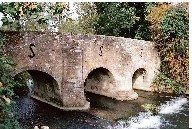 |
A year earlier the
Commissioner for Monasteries had written:
“It might have better been called Dirtforde,
the poorest abbey I have seen.” Like
Easebourne, Shulbrede and Boxgrove, the entire
holdings were appropriated by Sir William
Fitzwilliam, Earl of Southampton and Lord Privy
Seal, who owned the Cowdray estate. The buildings
were purchased by Sir Edmund Mervyn for £327 and
finally demolished in 1783. A farm now stands on
the site, incorporating the few stones that
remain, and there is a fine mediaeval bridge
nearby.
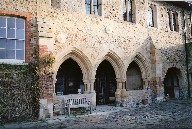 |
|
Easebourne Priory
was founded before 1238 as a house of
Augustinian Canonesses. For the Daily
Office they used the present parish
church, but parts of the monastic
buildings remain, incorporated into a
later house. At
the Dissolution the Prioress and her nuns
were ordered to leave, and it is said
that the Prioress pronounced a curse of
fire and water upon the new owners, and
that their male heirs should perish.
|
Nothing happened for more
than two centuries, by which time
Fitzwilliam’s estate had passed to the
Browne family. Then, in 1793, soon after
extensive repairs had been carried out to Cowdray
House, a small piece of smouldering charcoal fell
on to the floor of the carpenter’s workshop,
and by morning the entire great house was a burnt
out ruin.
At the same time, the eighth Viscount, aged
twenty-four and on holiday in Europe with a
friend, recklessly attempted to shoot the falls
on the Rhine at Laufenburg. Their boat capsized
and they were never seen again. So the curse of
fire and water was fulfilled.
Shulbrede Priory, a little to the north, was an
Augustinian Priory founded around 1200. The
church with its central tower was a very
substantial building, especially for a house with
just a prior and five canons. By the time of the
visitation by the King’s Commissioners in
1535, servants outnumbered canons by twenty-six
to three, and the Priory was suppressed two years
later.
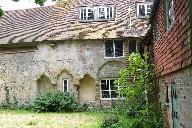 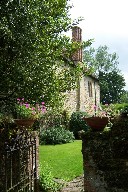 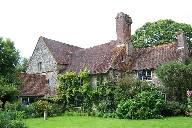
The remains,
including the vaulted parlour and the
Prior’s Chamber, became a Manorial
farmhouse, and since1905 have been the home of
the descendants of the composer, Sir Hubert
Parry, whose suite of piano pieces, Shulbrede
Tunes, were inspired by the house and its
surroundings. The Priory, which contains some
important Tudor wall paintings, is open to the
public at summer Bank Holiday weekends.
Selborne Priory met with rather a different fate.
It was founded in 1233 by Bishop Peter des
Roches, again for Augustinian, or Black Canons,
on land given by James de Norton and James de
Oakhanger in the valley of the Oakhanger stream.
At its height the Priory was endowed with
property as far afield as Bramdean, Alton and
Petersfield, and received appropriations from
churches at Basing, Tisted and East Worldham,
among others. In 1462 its two thousand acres were
valued at nearly £90.
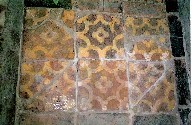 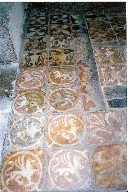 
Being directly
under the jurisdiction of the Bishop of
Winchester, Selborne Priory was subject to
regular visitations, or inspections.
There was often
criticism of the behaviour of the canons
and of the condition of the buildings,
and by 1484 its state was such that it
became the property of Magdelen College,
Oxford, which had been founded by a
Winchester bishop, William Wayneflete,
some forty years earlier. Within two
years a papal bull had been issued and
the Priory was deserted. So Selborne
Priory escaped the trauma of the
Reformation, and although its walls are
now nothing more than lines in the turf,
some beautiful mediaeval tiles have
survived, reset in the Parish Church. The
archives have survived too, more or less
complete, safe in the Founder’s
Tower at Magdalen.
|
|
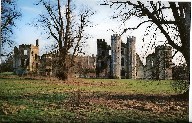 |
Tom Muckley, May 2004
This article was originally
published by the
Petersfield Post
tommuckley.co.uk
|
|











